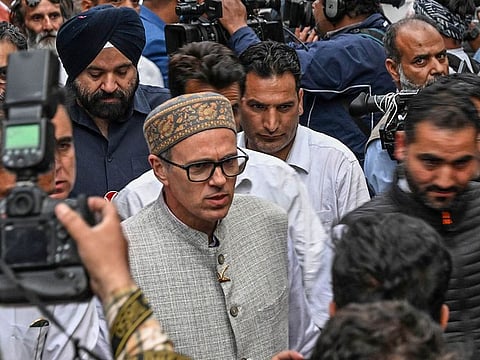India: Haryana goes BJP’s way while J&K embraces INDIA alliance
Alliance must raise its game and avoid premature celebrations of uncontested victories

Just 127 days, or four months, after the results of the general elections, which gave the Modi-led Bharatiya Janata Party (BJP) a reality check, reducing it from a full majority, the voters in Haryana brought back a BJP government for a historic third term, delivering a major blow to the Congress party.
The INDIA alliance of the National Conference (NC) and the Congress party won in Jammu & Kashmir, with Omar Abdullah of the National Conference expected to become the Chief Minister of the state.
The Congress was widely expected to win in Haryana, as predicted by all exit polls. However, the party’s characteristic hubris and infighting over the spoils of office led to a significant consolidation against the Jat vote, represented by its powerful leader Bhupinder Singh Hooda.
Despite losing three elections in a row, the Hooda family continues to control the Congress in Haryana. Their dominance led to senior Dalit leader Kumari Selja being sidelined, as she was not involved in ticket selection — a costly mistake for the Congress.
The BJP won despite having replaced the widely unpopular Chief Minister, M.L. Khattar, who was blamed for misadministration, anger over the Agniveer issue, the farmers’ movement, lack of job creation, and the breakdown of civic amenities in Gurgaon, which was attributed to corruption.
Replacing Khattar with Nayab Saini appeared to counter anti-incumbency, as non-Jat voters were determined to prevent Hooda’s inevitable Jat dominance. The silent consolidation of all other castes seemed to have caught the Congress off-guard, revealing how unprepared the party was. What had worked during the general elections just four months ago clearly shifted in the state elections.
Key takeaways
The complete decimation of the regional parties led by the Chautala families, who have splintered into factions. The Congress was in a direct face-off with the BJP, and history shows that the party doesn’t fare well in straight fights.
The AAP’s lacklustre debut, despite its founder, Arvind Kejriwal, hailing from Haryana. The party failed to resonate with voters, despite Kejriwal’s extensive campaign and claims of vendetta politics by the BJP. AAP must recognise that, despite being a successful political start-up, it is now facing implosion. Kejriwal’s personality cult and politics of freebies are reaching their expiration date. AAP has failed to grow beyond Delhi and Punjab and has had no impact in Haryana.
The Congress did not form an alliance with AAP in Haryana, and now plans not to ally with it in the upcoming Delhi elections, which will reveal where AAP stands with voters.
The Congress needs to clean house and replace rejected leadership in every state, much like the BJP does with its leaders. Haryana should serve as a cautionary tale for the Congress to consolidate around a single leader.
Historical sense of neglect
The INDIA alliance must ensure good governance in J&K, despite the overarching powers of the lieutenant governor, Manoj Sinha. The restoration of full statehood in J&K should be the goal, and the BJP must carry Jammu, which has voted for them, along. The Congress, as a national party, must fight for Jammu’s full inclusion in governance and address its historical sense of neglect.
Abdullah has experience governing the troubled state, and the central government must commit to fully implementing development initiatives in J&K.
The BJP is buoyed by the results and expects Haryana to provide tailwinds for the upcoming elections in Maharashtra and Jharkhand.
INDIA alliance must raise its game and avoid premature celebrations of uncontested victories. This applies particularly to the Congress and Rahul Gandhi, who is being treated nothing short of a cult figure by the party.
Sign up for the Daily Briefing
Get the latest news and updates straight to your inbox




